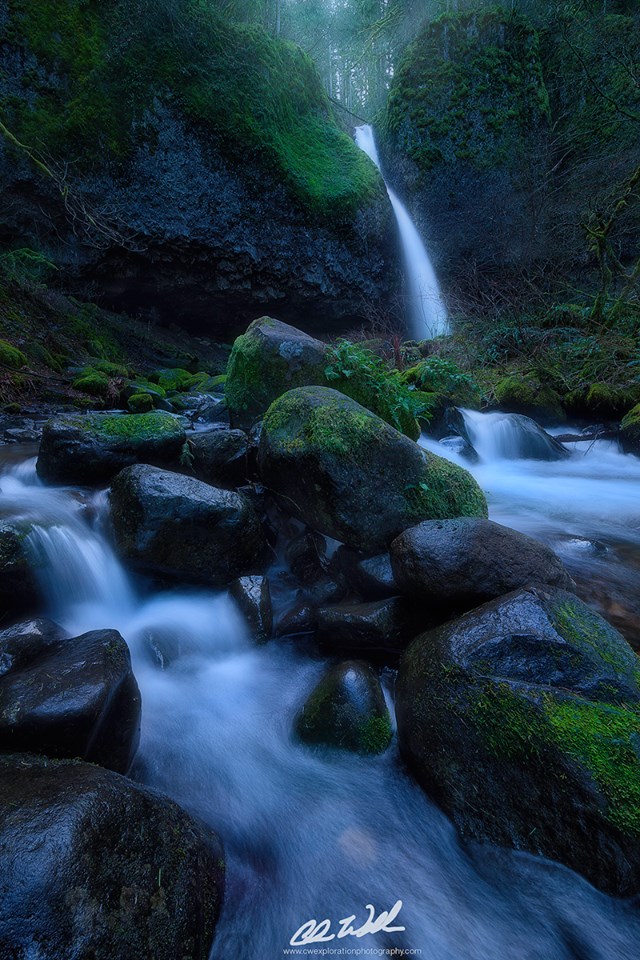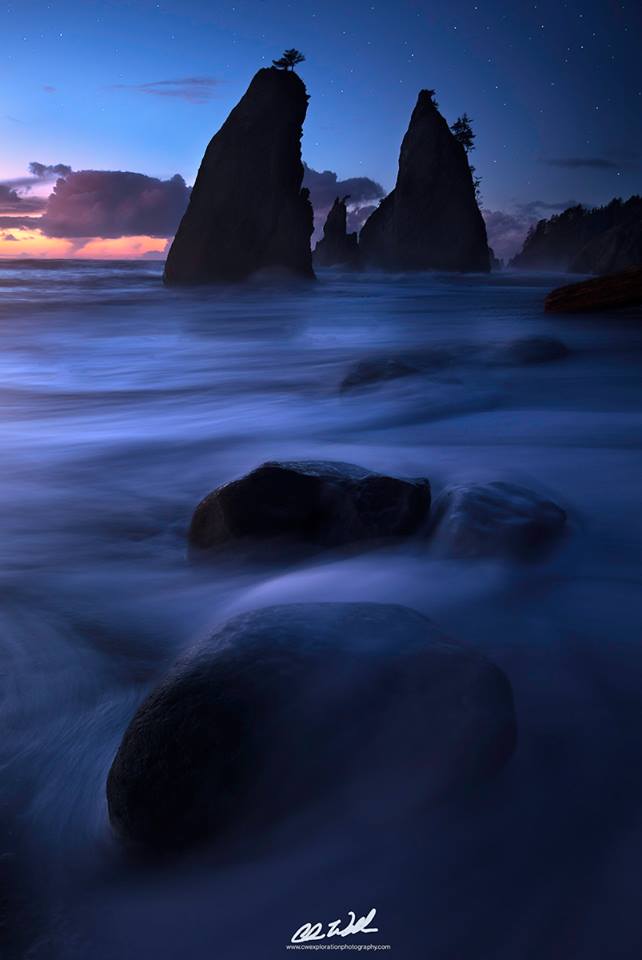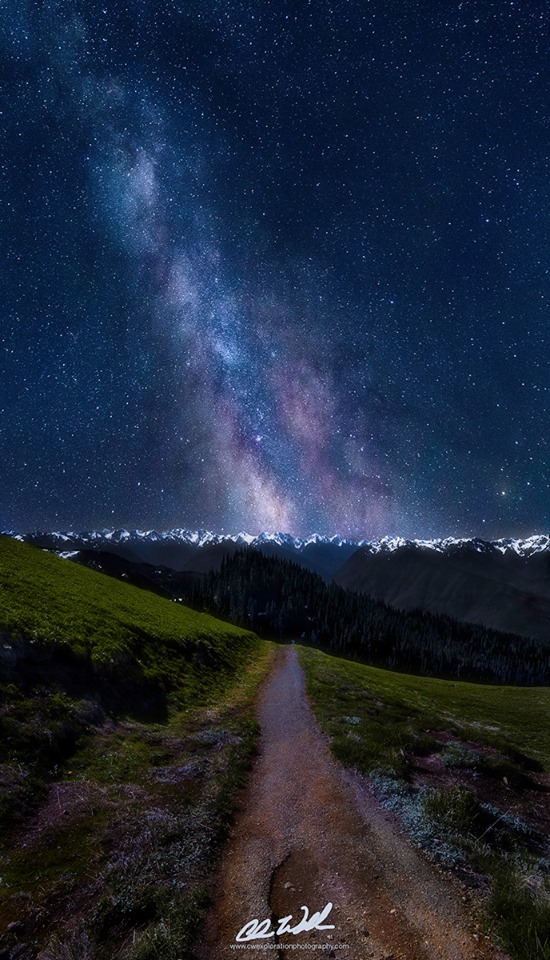Slowing Things Down
What do silky waterfalls, glass like water and millions of stars in the sky have in common? Slow shutter speeds. Slowing things down can really add depth and character to an image, making it stand out from the crowd. In this post I will outline how you can use slower shutter speeds to your advantage to obtain a landscape photograph that will blow people away.
Silky Waterfalls
 Many of you have probably seen photos of waterfalls that seem to flow right before your eyes. This is done by slowing down the shutter speed, that is leaving the sensor exposed to the image you are photographing for longer periods of time. To do this you must shoot in the dreaded manual mode of the camera. A lot of people are very intimidated by this, but fear not! It’s not as bad as it seems. Manual mode can become your best friend while shooting landscapes. A tripod is a must for this type of photography as your camera must be absolutely still for the entire shot. A cable release is also a much needed accessory, but if you don’t have one you can use your camera’s built in timer delay (usually between 2 and 10 seconds).
Many of you have probably seen photos of waterfalls that seem to flow right before your eyes. This is done by slowing down the shutter speed, that is leaving the sensor exposed to the image you are photographing for longer periods of time. To do this you must shoot in the dreaded manual mode of the camera. A lot of people are very intimidated by this, but fear not! It’s not as bad as it seems. Manual mode can become your best friend while shooting landscapes. A tripod is a must for this type of photography as your camera must be absolutely still for the entire shot. A cable release is also a much needed accessory, but if you don’t have one you can use your camera’s built in timer delay (usually between 2 and 10 seconds).
Shooting waterfalls can be fairly tricky depending upon the lighting as a sunny sky can cause an image to be ‘blown out’ or overexposed. You need to compensate for the longer shutter speeds by keeping your ISO low and your aperture small (large f/stop numbers, think f/16-f/22) . Another way to avoid this is aiming to shoot waterfalls under cloudy skies if possible, if not, then an ND filter is your new best friend.
An ND filter or Neutral Density filter allows you to add more f/stops to your aperture in other words less light will hit your sensor. This is great for shooting long exposure landscape photography. Neutral Density filters are often sold at 3, 4, 6, 9 or even higher f/stops. This means if your particular lens is rated for f/22 a three f/stop filter will make the lens shoot at f/25. Set your camera up on your tripod and aim to shoot for 0.5 seconds to 2 seconds for fast moving water and longer times for slower moving water. Remember to adjust your aperture accordingly.
The Misty Ocean and Glass Like Water
 This is one of my favorite uses of long exposure photography for landscapes. Misty oceans and glass water really require a lot of patience and low light. For this type of photography the Magic Hours are the preferred times to shoot as you really need low light to obtain this type of shot. Flat water and misty oceans can really only be obtained by opening the shutter for 10 seconds or longer (sometimes as long as 2 minutes). This really requires an ND filter to achieve the best results.
This is one of my favorite uses of long exposure photography for landscapes. Misty oceans and glass water really require a lot of patience and low light. For this type of photography the Magic Hours are the preferred times to shoot as you really need low light to obtain this type of shot. Flat water and misty oceans can really only be obtained by opening the shutter for 10 seconds or longer (sometimes as long as 2 minutes). This really requires an ND filter to achieve the best results.
As I mentioned above a tripod is very important and in this case so is a cable release. A cable release will allow you to switch to ‘Bulb’ mode on your camera and shoot for longer than 30 seconds.
Remember to look for objects of interest when shooting these types of photos as they will add a great deal of character to your photo. Look for trees, rocks and other objects to lead your eye. See my Getting The Shot post for more tips.
Shooting The Stars
Astrophotography is becoming extremely popular these days. It really is amazing how much more our cameras can capture than our eyes can see. This type of
photography is a little less technical on the shooting end, however it can be a little difficult to edit these photos in post processing. Your best friend for this type of photography is an ultra wide angle lens with a very wide aperture, preferably f/2.8 or lower. This will allow a great deal more light from the stars to hit your sensor, making for much clearer and brighter night sky photos. Tokina makes some amazing lenses for this type of photography. Look into the Tokina 11-16mm f/2.8 for crop frame bodies and my new personal favorite the Tokina 16-28mm f/2.8 for full frame bodies.
The key to taking photos of this nature is dark skies. You need to get in an area with minimal light pollution and clear skies. This may mean that you have to drive for an hour or two away from big cities. Once you arrive at your favorite night sky viewing area, break out your tripod. Switch to manual mode and set your camera to the highest aperture possible (small f/stop numbers) such as f/2.8 or f/1.4. The next step is to adjust the ISO to around 1600-3200. The higher the ISO the noisier the photo is, so take a few test shots to determine what works best. Set your lens to the widest possible zoom and the focusing ring to infinity. Choosing the shutter speed is the trickiest part of astrophotography.
You need to follow the rule of 600 to take in to account the rotation of the earth. Take the number 600 and divide it by your focal length. An example of this follows: say you want to shoot at 16mm, take 600/16mm and you get 37.5 seconds. That’s the longest amount of time you can shoot for without getting blurry or trailing stars. I normally shoot for 30 seconds max as longer shutter speeds can lead to blurry or less sharp stars. Star trails can be obtained by stacking 50-350 30 second images in post processing software. You get something like the image seen above once you finish the editing process.

